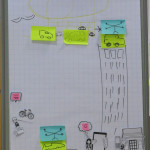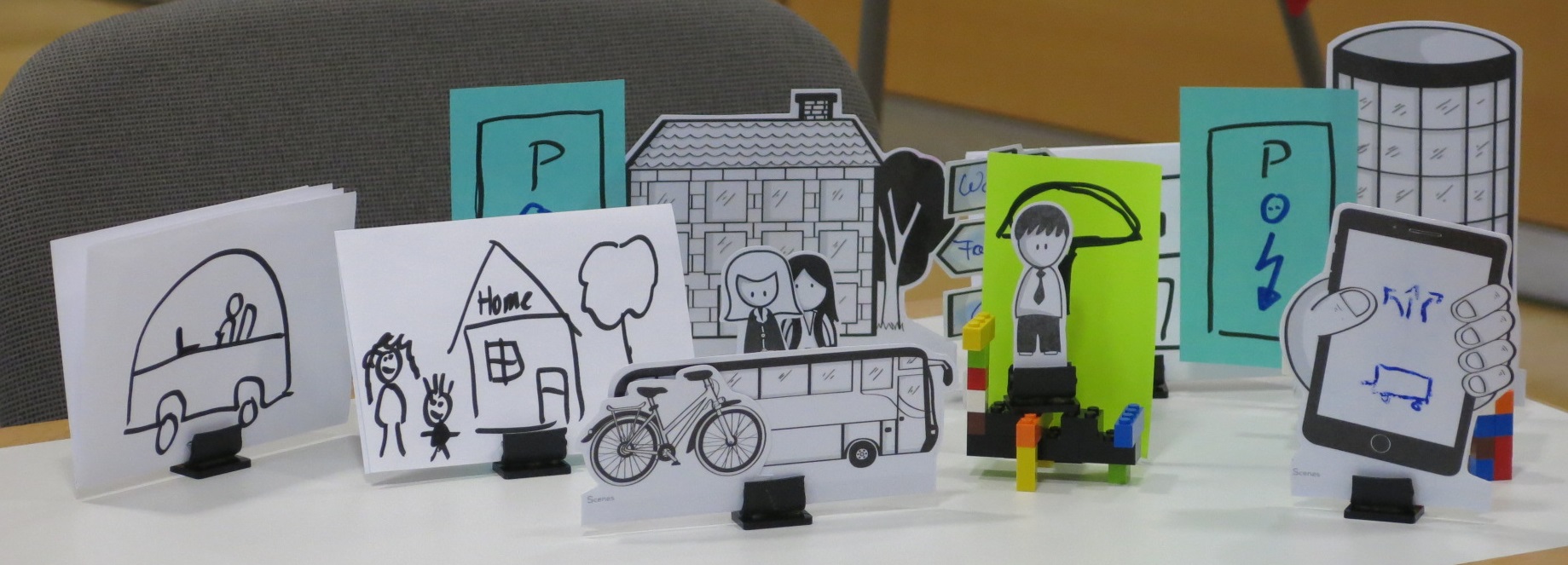„Experience the journey to user-centric innovation in 5 simple steps“ this was the title of our workshop at the OOP conference this year. Our workshop addressed people who are looking for innovations in digital products and services, but run short of new ideas. People who have ideas, but can“™t decide whether they are brilliant or a dead end were welcome as well.
So what did we do? During our workshop our participants experienced Design Thinking in order to avoid the trap of conventional thought patterns and to boost creativity and innovation to find new solutions for issues that have proven to be tough to crack. The challenge we provided was:
„How might we redesign the parking situation in urban environments to improve the living quality?“
So how did we start? After a short introduction to Design Thinking we explored all five steps of the Design Thinking process:

Keep in mind that a core principle of Design Thinking is to question, evaluate and revise your assumptions – what you think you already know – in order to break complacency and bad habits. During the Empathize-Phase we tried to dig deeper into our users minds, needs, behaviours and pain points. We opened up the problem space to identify what users really need. During the Define-Phase we defined different problems and selected the most promising one. For example: Laura needs an easy to reach parking lot in order to have more time for her child, doing sports and shopping.
Various ideas emerged during the Ideation-Phase. We first collected them silently. After everybody has freed his mind we got together in groups and discussed the various ideas. While presenting ideas to others our participants continuously came up with new ideas. At the end of the Ideation-Phase we selected the most promising one and built a prototype during the upcoming Prototype-Phase. For prototyping we provided elements of the story telling box, Lego as well as paper materials. Beyond others prototypes were built for the following ideas:
- An autonomous cars that works similar to car sharing providers.
- Drones that store the cars either on houses or other car parking places up in the air.
- An autonomous trolley that transports the stuff of a sales person from one appointment to another.
Finally we did a short Testing-Phase using presentations. Here are some impressions:
The keep my personal summary short I want to stress three points:
- Although the prototypes were cheap and easy made I was pretty impressed by the quality of the ideas and how well thought through they were!
- The time slot was fucking short. We only did a half day workshop and we had to keep a good time management to go through all five steps of the Design Thinking process.
- And the most beautiful words came from a participant when he noticed, that they came up with a lot of new ideas during the prototyping.





